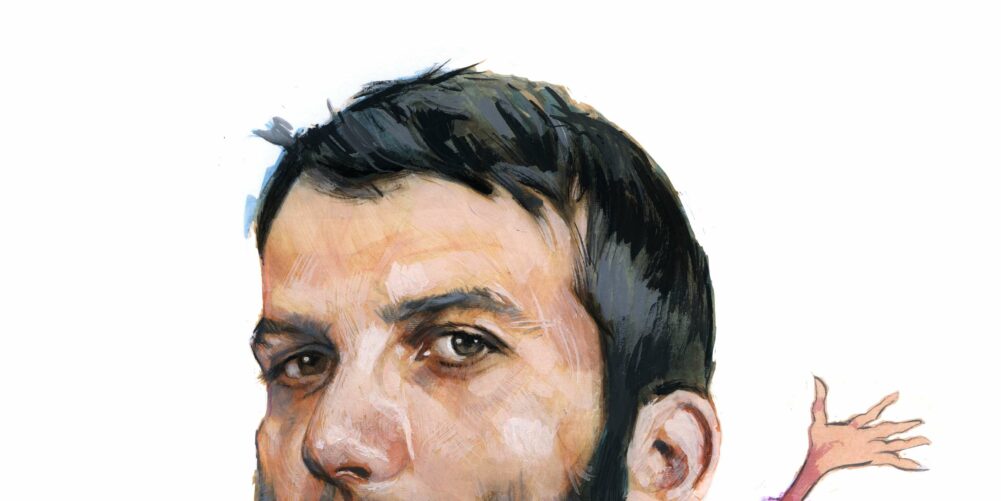It wasn’t a huge surprise when Moeen Ali came waltzing down the pitch in the second innings at Lord’s. After all, nifty footwork is only to be expected when the England batting coach is a Strictly Come Dancing champion. However, while Mark Ramprakash operated in sequined waistcoats under ballroom lighting, Moeen appeared to be attempting the kind of hokey-cokey performed by the wrinklies after too many advocaats down at the local palais.
The strange thing is that Moeen advertised what he was going to do. Stuck on the back foot in the first innings, he announced that there was more chance of finding Lord Lucan in his crease second time around, and, like the owner of a playful labrador let off its lead at the seaside, Yasir Shah only had to throw a stick at the nearest wave for Moeen to jump in after it.
What is it with England and leg-spinners? It’s a bit like those sea nymphs in Greek mythology luring smitten sailors on to the rocks, and Yasir is just the latest in a long line of a breed who, it appears, only has to flutter an eyelash or flash a leg to have England batsmen queueing up to book themselves into cricket’s equivalent of a Dignitas clinic.
The list of England’s wrist-spinning tormentors is not a short one, nor is it exclusively confined to double-jointed twirly men from the Orient. When Australia won the Ashes in England in 1934 and again in 1938, the tourists’ most influential bowler – in both series – was Bill O’Reilly.
Then there was Jack Iverson, who reputedly learnt how to purvey about half a dozen varieties of leg-spin by practising with a ping pong ball on wartime duty with an Australian anti-aircraft battalion in the Far East. Followed by Richie Benaud, whose 6-70 clinched the 1961 Ashes at Old Trafford, and Shane Warne, who, it’s sometimes forgotten, was so good that Stuart MacGill, rated by Benaud as one of the best leggies he’d ever seen, could barely get a game.
Another leg-spinner who became roughly ten times more lethal when purveying his repertoire of tricks to English batsmen was the West Indian Sonny Ramadhin, and another tormentor was Abdul Qadir, the bowler who inspired Warne to inflict so much misery on the mother country.
When Pakistan toured England in 1982, the home batsmen were dyslexic when it came to reading him, the upshot proving to be the initial catalyst for neutral umpires. Imran Khan had a subtle side to his captaincy, instructing Abdul to grow a goatee beard to make him look even more mysterious, but otherwise spent the entire series moaning so unrelentingly about the officials that Pakistan officially started lobbying for independent arbiters.
Intikhab Alam, the current tourists’ manager, had a big hand in Pakistan going through the 1974 tour to England unbeaten, and in a career spanning 47 Tests and 125 wickets, the only other spinner to appear as often in the same headline as the word “Wily”, was Raymond Illingworth.
And now we have Yasir, who took most of his wickets at Lord’s with the one delivery that has foxed English batsmen for generations. It’s the ball that makes a noise like a helicopter through the air, only to go straight on after landing.
Not exactly a hand grenade for a cautious pair of eyes, but lethal for someone whose idea of playing himself in is to wait until his second ball before haring down the pitch for a cross-batted heave towards cow corner. Usain Bolt wouldn’t have been that far down when he missed it.
Invited to comment after the game, the England coach Trevor Bayliss tried manfully to come across as the no bulls***, tell-it-like-it-is-Aussie, before remembering in the nick of time who his current employers are. “Look,” he said (all Australian sentences start with “look”) “if he’d have danced down the wicket and hit it over the top, everyone would have been saying ‘what a great shot’.”
Well done, Trev. That’s more like it. Another case of the auntie who undergoes gender re-assignment becoming your uncle.
By comparison, if you found yourself in possession of a time machine, on a mission to go back and round up every specialist England leg-spinner for a nostalgic get-together, you wouldn’t so much need the Albert Hall to fit them all in as the church hall.
In which case, it is something of an irony that one of the two most celebrated deliveries in Test match history – both bowled by leg spinners – was sent down by an Englishman. It’s tempting to give the outright No.1 spot, on the basis that there isn’t a batsman in history who’d have laid a bat on it, to Shane Warne, but with apologies to Mike Gatting, the googly sent down by Eric Hollies at the Oval in 1948 probably gets equal billing because it was bowled to Don Bradman.
And yet, there haven’t been too many leggies flying off the conveyor belt in the England leg-spin factory since Hollies, and while it’s fair to say that four-sweater weather on a Derby green-top is not an ideal breeding ground for the species, even the few we’ve produced have been restricted to unexpected cameo appearances, like guests on the Morecambe and Wise Christmas Show.
Robin Hobbs played seven Tests for England as a specialist leg spinner between 1967 and 1971 (12 wickets at 40 apiece) after which there was a 20-year gap until the next one, Ian Salisbury, who looked the part to begin with by taking five wickets on his debut against Pakistan at Lord’s, all of them decent batsman as well.
However, in the 14 years between Salisbury finishing in 2000 with only 20 wickets at 77 apiece, until Scott Borthwick was selected in Sydney in 2014 just in time to play a small part in England getting battered in a 5-0 whitewash, those 14 years involved a total of 18 overs of specialist leg spin. Sent down – without a wicket to show for it – by Chris Schofield.
And now, England’s response to Yasir is to have another go with Adil Rashid, who, if selected, may not spook these particular tourists too much on the back of eight wickets against Pakistan in the UAE last winter at the miserly rate of 69.5 apiece.
It’s all very well fighting fire with fire, but this looks a bit like a blow torch against a box of Swan Vestas.
This piece originally featured in The Cricket Paper, Friday July 22 2016
Subscribe to the digital edition of The Cricket Paper here












